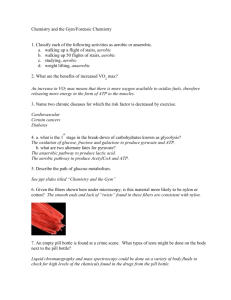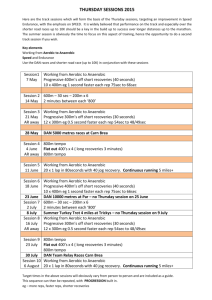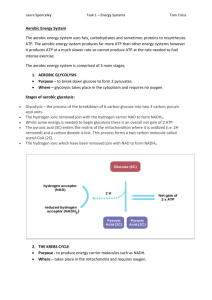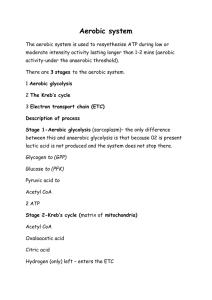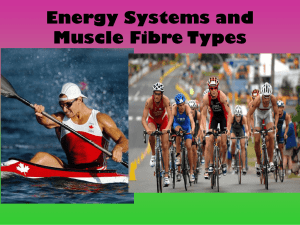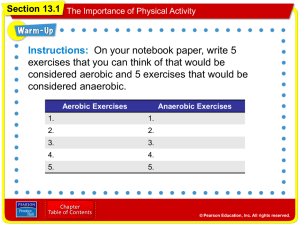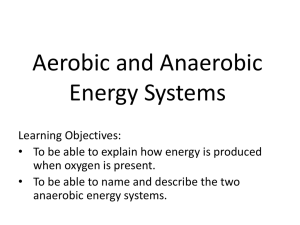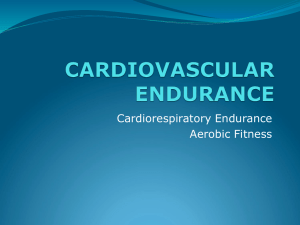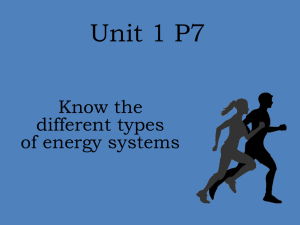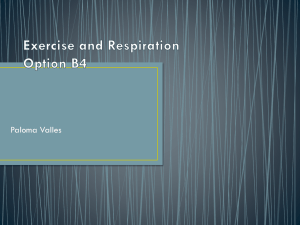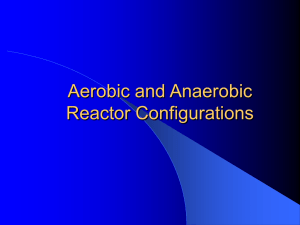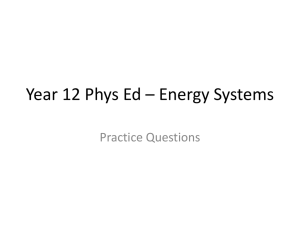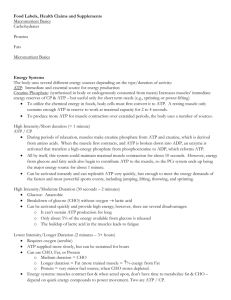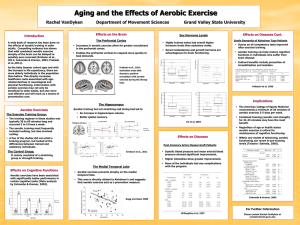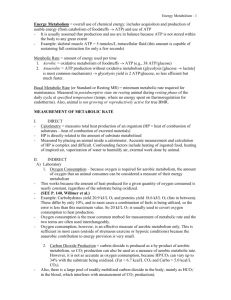Energy system - Responses to exercise PPT
advertisement
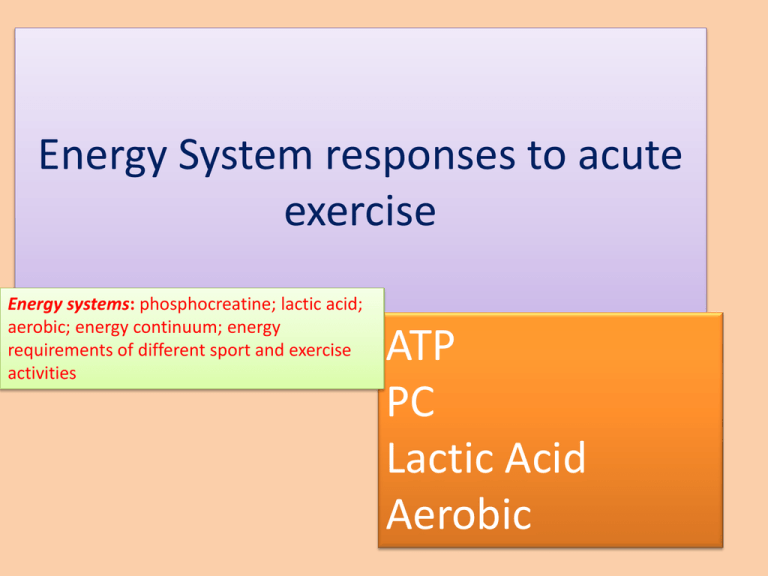
Energy System responses to acute exercise Energy systems: phosphocreatine; lactic acid; aerobic; energy continuum; energy requirements of different sport and exercise activities ATP PC Lactic Acid Aerobic Energy Systems & Exercise: The Basics 0 sec ATP 4 sec 10 sec 1.5 min 3 min + Strength – Power: power lift, shot put, golf swing ATP-PC (phosphagen) Lactic Acid/Anaerobic Glycolysis Sustained Power: sprints, fast breaks, football Anaerobic Power – Endurance: 200-400 m dash, 100 m swim Aerobic Endurance: Beyond 800 m run Aerobic System Immediate/short-term non-oxidative systems Aerobic-oxidative system Fuel, Energy systems & Exercise • Anaerobic Energy System = Carbohydrates are the only fuel source • With prolonged exercise, Carbohydrates are the first fuel choice, as exercise continues, FAT becomes predominant : • As exercise intensity , energy supplied by Carbohydrates • As duration , energy supplied by fat • Protein is not a main fuel source except in an emergency : • As glycogen , energy supplied by protein • Each system plays an important role in energy production: • All energy systems are “on” at all times • This gives us a variety of movements • The systems interact to supply Energy for the activity Fuel, Energy systems & Exercise % energy from FAT 40 30 20 10 % energy from CHO 40 60 80 100 As exercise gets harder, the % energy from oxidation of Carbohydrates goes UP sharply while the % energy from fat goes DOWN increasing intensity of exercise Energy Systems on a Continuum! ‘All energy systems are “on” at all times’ All three energy systems contribute at the start of exercise but the contribution depends upon the individual, the effort applied or on the rate at which energy is used. The following graph shows how the energy systems contribute to the manufacture of ATP over time when exercising at 100% effort. The thresholds (T) indicate the point at which the energy system is exhausted - training will improve the thresholds times. Energy Systems on a Continuum! ADENOSINE TRIPHOSPHA TE (ATP) PHOSPHOCREATINE (PCr) GLYCOLYSIS (ANAEROBIC; CHO BREAKDOWN) KREBS CYCLE (AEROBIC; CHO, FAT, AND PROTEIN BREAKDOWN) Energy Systems working together: 100m SPRINT (10 seconds of maximal exercise) Energy Systems on a Continuum! ADENOSINE TRIPHOSPHA TE (ATP) PHOSPHOCREATINE (PCr) GLYCOLYSIS (ANAEROBIC; CHO BREAKDOWN) KREBS CYCLE (AEROBIC; CHO, FAT, AND PROTEIN BREAKDOWN) Energy Systems working together: 800 METER RUN (50 seconds) Energy Systems on a Continuum! ADENOSINE TRIPHOSPHAT E (ATP) PHOSPHOCREATINE (PCr) GLYCOLYSIS (ANAEROBIC; CHO BREAKDOWN) KREBS CYCLE (AEROBIC; CHO, FAT, AND PROTEIN BREAKDOWN) Energy Systems working together: MARATHON 2.5 hours of exercise Sport, Exercise and Energy Systems Anaerobic Wt. Training Gymnastics Football Baseball 70-80% Anaerobic 20-30% Aerobic Stop & Go Sports Tennis Soccer Field Hockey Aerobic Jogging Marathons Cycling Aerobic Dance Energy System recruitment in Sport Sport ATP-CP and LA % LA-Aerobic % Aerobic % Basketball Fencing Field events Golf swing Gymnastics Hockey Distance running 60 90 90 95 80 50 10 20 10 10 5 15 20 20 20 Rowing Skiing Soccer Sprints Swimming 1.5km 20 33 50 90 10 30 33 20 10 20 50 33 30 Tennis Volleyball 70 80 20 5 10 15 5 30 70 70 Table adapted from Fox E. L. et al, The Physiological Basis for Exercise and Sport, 1993

